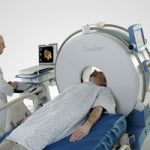Earlier this week, I wrote about several protocols that can be used in patients with rib fractures. Most trauma centers have a massive trauma protocol. Many have pain management or alcohol withdrawal or a number of other protocols. The question arose: why do we need another protocol? Can we show some benefit to using a protocol?
I’ve looked at the literature, and unfortunately there’s not a lot to go on. Here are my thoughts on the value of protocols.
In my view, there are a number of reasons why protocols need to be developed for commonly encountered issues.
- They allow us to build in adherence to any known practice guidelines or literature.
- They help conserve resources by standardizing care orders and resource use.
- They reduce confusion. Nurses do not have to guess what cares are necessary based on the specific admitting surgeon.
- They reduce errors for the same reason. All patients receive a similar regimen, so potential errors are more easily recognized.
- They promote team building, particularly when the protocol components involve several different services within the hospital.
- They teach a consistent, workable approach to our trainees. When they graduate, they are familiar with a single, evidence based approach that will work for them in their practice.
A number of years ago, we implemented a solid organ injury protocol here at Regions Hospital. I noted that there were large variations in simple things like time at bedrest, frequency of blood draws, how long the patient was kept without food and whether angiography should be considered. Once we implemented the protocol, patients were treated much more consistently and we found that costs were reduced by over $1000 per patient. Since we treat about 200 of these patients per year, the hospital saved quite a bit of money! And our blunt trauma radiographic imaging protocol has significantly reduced patient exposure to radiation.
Bottom line: Although the proof is not necessarily apparent in the literature, protocol development is important for trauma programs for the reasons outlined above. But don’t develop them for their own sake. Identify common problems that can benefit from consistency. It will turn out to be a very positive exercise and reap the benefits listed above.


